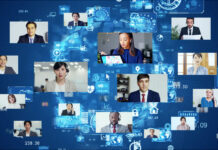The seismic shift towards remote work catalyzed by the COVID-19 pandemic has forced organizations to rethink many aspects of their operations, including learning and development (L&D). Leslie Deutsch, Vice President of People Strategy for TEKsystems Global Services, provides insightful perspectives on the current state and future of remote learning in my interview with her. As she elaborates, “employees have different situations in different work environments and thus require unique learning experiences.” This necessity has driven a surge in leveraging technology to create flexible and personalized learning programs that can cater to the diverse needs of the workforce.
The New Era of Learning and Development
In the post-COVID era, companies have had to innovate rapidly to keep up with the changing landscape. TEKsystems, a technology solutions provider working with 80% of the Fortune 500, has been at the forefront of this transformation. Deutsch explains, “it’s really exciting, especially as we start utilizing virtual and immersive learning environments that they can learn by doing.” The adoption of cloud technology, AI, and extended realities such as augmented reality (AR), mixed reality (MR), and virtual reality (VR) has enabled the creation of realistic simulations. These tools provide a safe space for employees to practice and refine their skills, enhancing engagement and accessibility.
One of the significant advantages of these technologies is their ability to ensure that learning materials are accessible to all employees, regardless of their location. This democratization of learning resources means that remote workers can access the same quality of training as their in-office counterparts, which is crucial for maintaining a level playing field. As Deutsch notes, “it allows all employees, not just those in the office, to access the necessary tools to become more productive, creating more value for the entire organization.”
Personalized and Data-Driven Learning
The integration of AI into L&D programs has brought about a revolution in how training is delivered and consumed. These technologies can tailor learning experiences to individual needs and provide real-time feedback, which is invaluable for continuous improvement. “As artificial intelligence and machine learning continue to evolve, we can use these tools to further individualize that learning and provide real-time feedback and generate personalized learning content,” says Deutsch.
The ability to gather and analyze quality data is another critical factor. Organizations can now make informed decisions based on comprehensive insights into their employees’ learning progress and needs. This data-driven approach helps companies to identify skill gaps and target their upskilling and reskilling efforts more effectively. “With quality data, we can help make informed decisions that influence and make people better at their jobs,” Deutsch adds.
Overcoming Challenges in Hybrid and Remote Learning
While the benefits of remote learning are clear, it is not without its challenges. One significant issue: “remote learners can feel really isolated and less motivated,” Deutsch acknowledges. This can be exacerbated by videoconferencing fatigue, a common issue in the remote working environment.
To mitigate these challenges, it is essential to use technology to measure engagement levels and make real-time adjustments to improve the learning experience. Deutsch highlights the importance of creating a positive learning environment that fosters growth opportunities and keeps employees engaged, regardless of whether the program is hybrid, virtual, or in-person.
The Importance of Human and Cultural Aspects in Learning
Beyond technical skills, understanding the cultural and operational nuances of an organization is crucial for new employees. These aspects are often conveyed through mentoring and on-the-job training, which can be more challenging to replicate in a remote setting. “It’s easier in person to get them together physically and have those side conversations,” Deutsch notes, but she also emphasizes that it is not impossible to achieve this in a remote environment.
Effective remote mentoring requires open lines of communication: “more frequent touch points and being more deliberate with the mentoring is key,” Deutsch advises. For onboarding, clear milestones and expectations are critical to ensure new hires integrate smoothly into the company culture and understand their roles.
The Role of Generative AI in Learning and Development
Generative AI holds immense potential to transform L&D by providing more personalized and scalable learning experiences. Deutsch envisions a future where generative AI plays a central role in capturing and conveying organizational knowledge, thus bridging the gap between remote and in-person learning. “Generative AI can become a powerful tool in the learning and development landscape,” she asserts.
By leveraging AI to provide personalized learning content and feedback, organizations can ensure that employees are building the relevant skills needed for their current roles and future growth. This technology can also facilitate better access to diverse learning resources, making it easier for employees to continue their development regardless of their location.
Future Outlook for Learning and Development
Looking ahead, the evolution of learning and development will be closely tied to the ongoing advancements in technology and the changing dynamics of the workplace. As Deutsch points out, “executives really have to look to align their learning tactics, their tools, their technologies to their business goals and then meet their individuals and their team members where they’re at.”
The focus will be on creating multifaceted workforce strategies that support both current and future skill needs. This approach will not only help in employee retention but also ensure that organizations are prepared for the rapid technological changes that lie ahead. “Creating that workforce strategy that meets the needs and desires of the workforce as a whole, regardless of location, is mission critical,” Deutsch concludes.
Thus, according to Deutsch, remote learning, when supported by the right technology and strategies, can be just as effective as in-person learning. By embracing the innovations in AI, cloud computing, and immersive environments, organizations can provide flexible, personalized, and engaging learning experiences that meet the diverse needs of their workforce – and that’s what I’ve seen with clients I helped figure out their hybrid and remote work models. The future of learning and development is undoubtedly bright, with technology playing a pivotal role in shaping the way we learn and grow in a distributed world.
About the Author

Dr. Gleb Tsipursky was named “Office Whisperer” by The New York Times for helping leaders overcome frustrations with hybrid work and Generative AI. He serves as the CEO of the future-of-work consultancy Disaster Avoidance Experts, and wrote the first book on returning to the office and leading hybrid teams after the pandemic, a best-seller called Returning to the Office and Leading Hybrid and Remote Teams.




































































